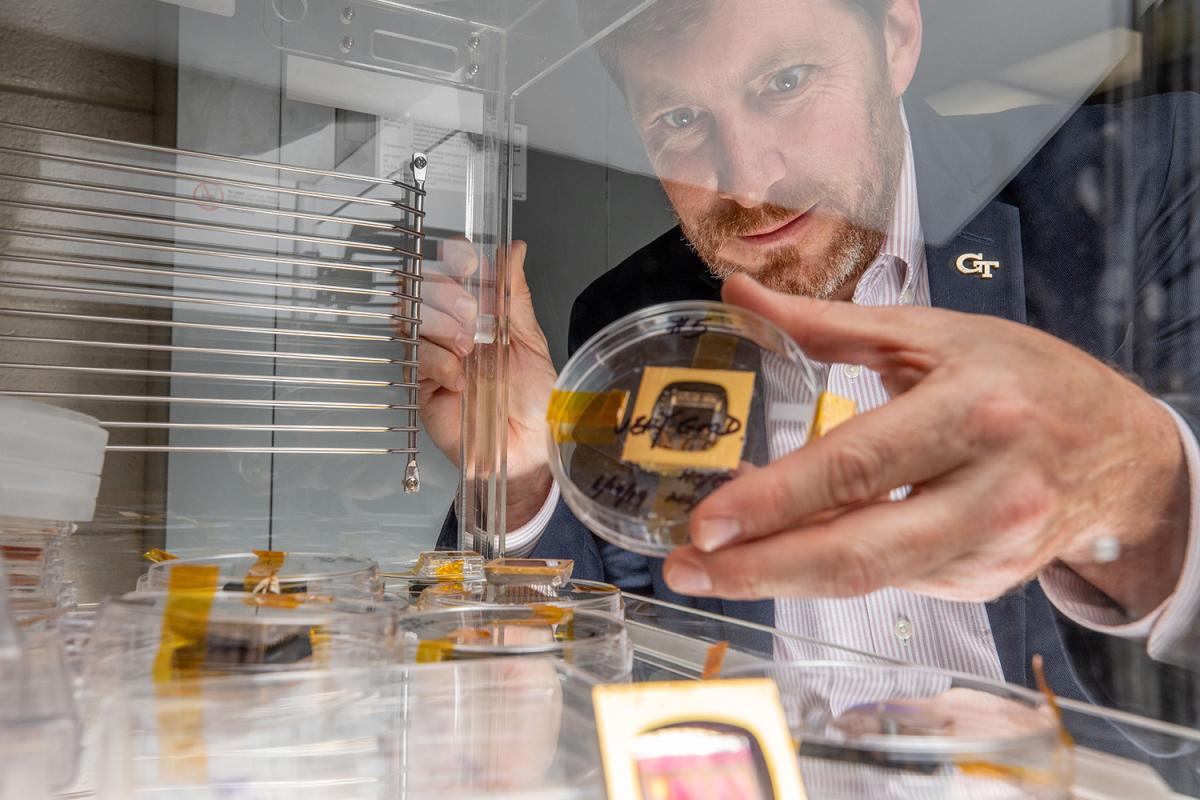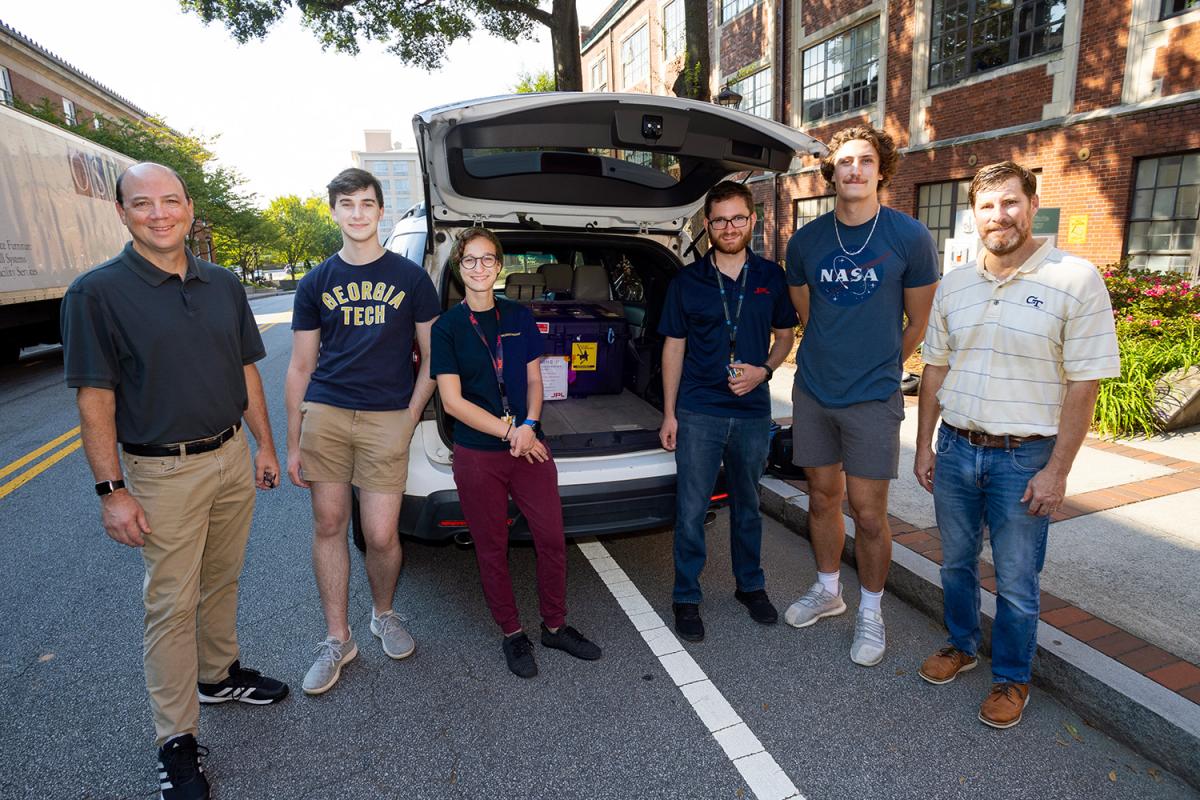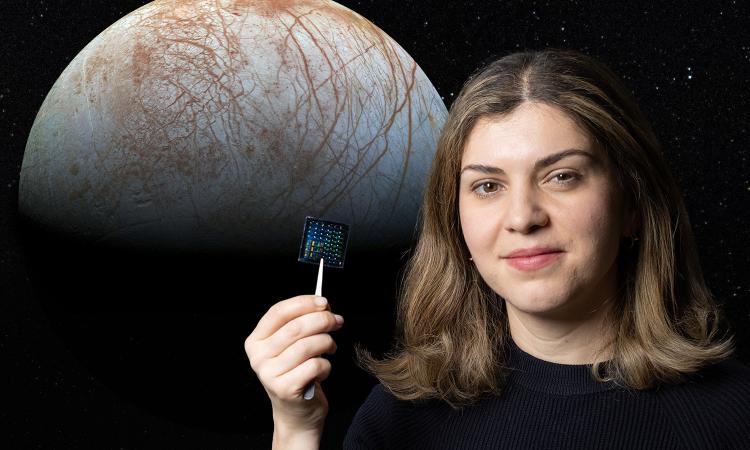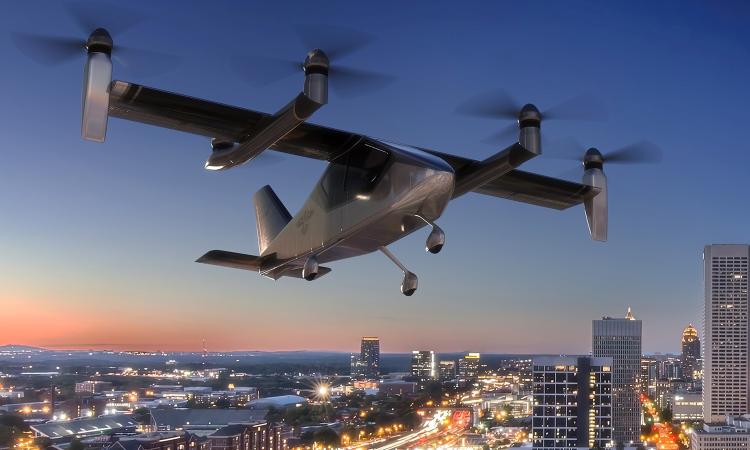(text and background only visible when logged in)
Space researcher. Materials scientist. Entrepreneur. And Yellow Jacket. The only thing missing on Jud Ready’s resume is “astronaut.” Not for lack of trying, though. Ready had hoped earning his bachelor’s, master’s, and doctoral degrees in materials science and engineering at Georgia Tech would lead him to a spot in NASA’s Astronaut Corps. Instead, it’s led him to the Georgia Tech Research Institute (GTRI), where his passion for space is alive and well.
1. What about space fascinates you?
It all goes back to my dad being interested in space. In first grade, we went to a how-to-use-the-library class, and I came across a book about the Mercury and Apollo astronauts. I checked it out and renewed it over and over again. I eventually finished it in second grade. So, I’ve had a lifelong commitment since then to space.
2. What drew you to engineering?
I grew up in Chapel Hill. In that same first grade class, we went to the University of North Carolina chemistry department. My mom is really into roses, and they froze a rose in liquid nitrogen then smashed it on the table. It broke into a million bits, and I was like, “What?!” The ability of science to solve the unknown grabbed me. And I had a series of very good science teachers — Mr. Parker in fifth grade, in particular. Then I took a soldering class in high school. We built a multimeter that I still have and still use, and various other things. And I suddenly discovered and started exploring engineering. Plus, I just like making things.
3. How did your career change from hoping to be an astronaut to being an accomplished materials engineer?
When I started looking at colleges, that was my primary interest: What school would help me become an astronaut the quickest. I applied to Georgia Tech as an aerospace engineer, but was admitted as an undecided engineering candidate instead. It was the best thing that could have happened. Later, I got hired as an undergrad by a professor who was doing space-grown gallium arsenide on the Space Shuttle. Ultimately, they offered me a graduate position. I accepted, because I knew you needed an advanced degree to be an astronaut — and for a civilian, a Ph.D. in a relevant career such as materials science.
I applied so many times to be an astronaut — every time they opened a call from 1999 until just a few years ago. Never got in. But I was successful at writing proposals and teaching. So I started doing space vicariously through my students, writing research proposals on energy capture, such as solar cells; energy storage, such as super capacitors; and energy delivery like electron emission. They’re all enabled by engineered materials.

Jud Ready holds a sample of a perovskite solar cell, along with other samples similar to those launched to the International Space Station. (Photo: Branden Camp)
4. What makes Georgia Tech and GTRI a key contributor to the future of humans and science in space?
Georgia Tech offers us so many unfair advantages over our competition. The equipment we’ve got. The students. You’ve got the curiosity-driven basic research coupled with the GTRI applied research model. We’ve had VentureLab and CREATE-X. Now we’ve got Quadrant-i to foster spinout companies from research.
5. One of your solar cell technologies is headed to the Smithsonian National Air & Space Museum. What is it?
Early in my career, we developed a way to texture thin film photovoltaics to allow for light trapping. Inverted pyramids are etched into silicon wafer-type solar cells so a photon of light has a chance to hit different surfaces and get absorbed. But thin film solar cells typically don’t etch well. I thought we could use carbon nanotubes to form a scaffolding, a structure like rebar. It’s mechanically reinforcing, but also electrically conductive. We coat the thin film solar cell material over the carbon nanotube arrays. You’ve got these towers, and you get this photon pinballing effect. Most solar cells perform best when perpendicular to the sun, but with mine, off angles are preferred. That’s great for orbital uses, because the faces and solar panels of spacecraft are frequently off-angle to the sun. And then you don’t have the complexity of mechanical systems adjusting the solar arrays. So, we got funding to demonstrate these solar cells on the International Space Station three times, and those are some of the cells we provided to the Smithsonian.
6. What’s it like to have something on display in such an iconic place?
The Smithsonian — that’s my favorite. My dad moved to D.C. after my parents divorced, and that was my favorite thing to do when I’d fly up there every couple weeks. They’re getting cadmium telluride carbon nanotube solar cells, perovskite, organic, and some CZTS (copper zinc tin sulfide) solar cells — all made at Georgia Tech. I didn’t get to be an astronaut, but that feels pretty close, getting our work in that museum. That’s very, very special.

Jud Ready (far right) with the Lunar Flashlight team, including Glenn Lightsey (far left), as they prepared to transport the CubeSat from campus to the Marshall Space Flight Center in Huntsville, Alabama. (Photo: Candler Hobbs)
7. Those cells are some of the 15 patents you hold. What other kinds of technologies?
Actually, we just got our 16th patent in mid-February. It’s for colorizing metal (without paint) by doing special thin film depositions. I’ve got two devoted to thin-film resistors. Three are the result of mattress spring research with Serta Simmons bedding. Two related to carbon nanotube electron emission for space propulsion. The 3D solar one. Several related to supercapacitors. Another related to microneedles. One is the basis for my spinout company, LZRD Tech, which is a sports performance textile. Another is the basis of my medical device startup, Hub Hygiene. That’s a fancy sponge, for lack of a better word, for disinfecting purposes. We have some with Corning for glass for LEDs. It’s kind of all over the place, but the unifying point is materials.
8. How many of Georgia Tech’s space missions have you been involved in? What’s the most memorable?
Wow, a half a dozen or so. And we just turned over solar cells for the MISSE-22 mission to the space station, and SSTEF-1 to the lunar surface, both launching in October.
Lunar Flashlight is my favorite and most memorable. NASA’s Jet Propulsion Lab really helped Georgia Tech come into the big leagues. We also got a connection to the Deep Space Network as a result — one of only four universities to have that. We had NASA engineers on site helping us, working together, and we solved all sorts of problems. And then NASA turned the spacecraft over to us, and that allowed Georgia Tech to do science that’s never been done before with an optical navigation experiment.
9. You teach a very popular course in the materials science of sports at Tech. Where did sports come from?
Doesn’t look like it fits, does it? My dad liked sports and space, so I like sports and space. I was offered a position on the Athletic Association Board of Trustees. I learned a lot, in particular about student-athlete engagement. They have exit interviews with the student-athletes and ask, “How would you make Tech better?” Over and over, the responses were, “We wish there were more rigorous sports-related courses.” And I was like, I can do that. Because the vast majority of student-athletes are not in the College of Engineering, I wanted to have a course that was open to them where they could be exposed to engineering rigor without necessarily being an engineer. We just won an innovation award for how we use Tech’s athletic facilities in that class, in fact.
10. If NASA, SpaceX, or Blue Origin called tomorrow offering you a seat on one of their missions, would you take it?
First of all, NASA is not going to call. I gave them plenty of opportunities to call. SpaceX, Blue Origin, other companies that have yet to be announced — heck, yeah, I would go.
It probably won’t happen to me but probably will happen for my grandkids. Depends on how fast things go; feels like technology’s advancing pretty fast.
(text and background only visible when logged in)
(text and background only visible when logged in)
Related Stories

Space: The Current Frontier
Our engineers have the solar system covered, with projects hundreds — or millions — of miles from home.

Engineering 21st Century Flight
The new ideas and emerging designs that will carry us into the future thanks to the work of Georgia Tech engineers.

These Engineers are Flying High
Meet alumni working at some of the world’s leading aerospace organizations to innovate, fly safer, and travel farther.
(text and background only visible when logged in)

Helluva Engineer
This story originally appeared in the Spring 2025 issue of Helluva Engineer magazine.
Not where we are, but where we’re going — whether it’s here on the ground or millions of miles away. Georgia Tech engineers are shaping the rapidly shifting future of how we’ll fly people and stuff. Our engineers are helping get humans to the moon and, eventually, Mars, while creating the tools to help us unravel some of our solar system’s deepest mysteries. The sky is no limit in the Georgia Tech College of Engineering. Take off with us into The Aerospace Issue.